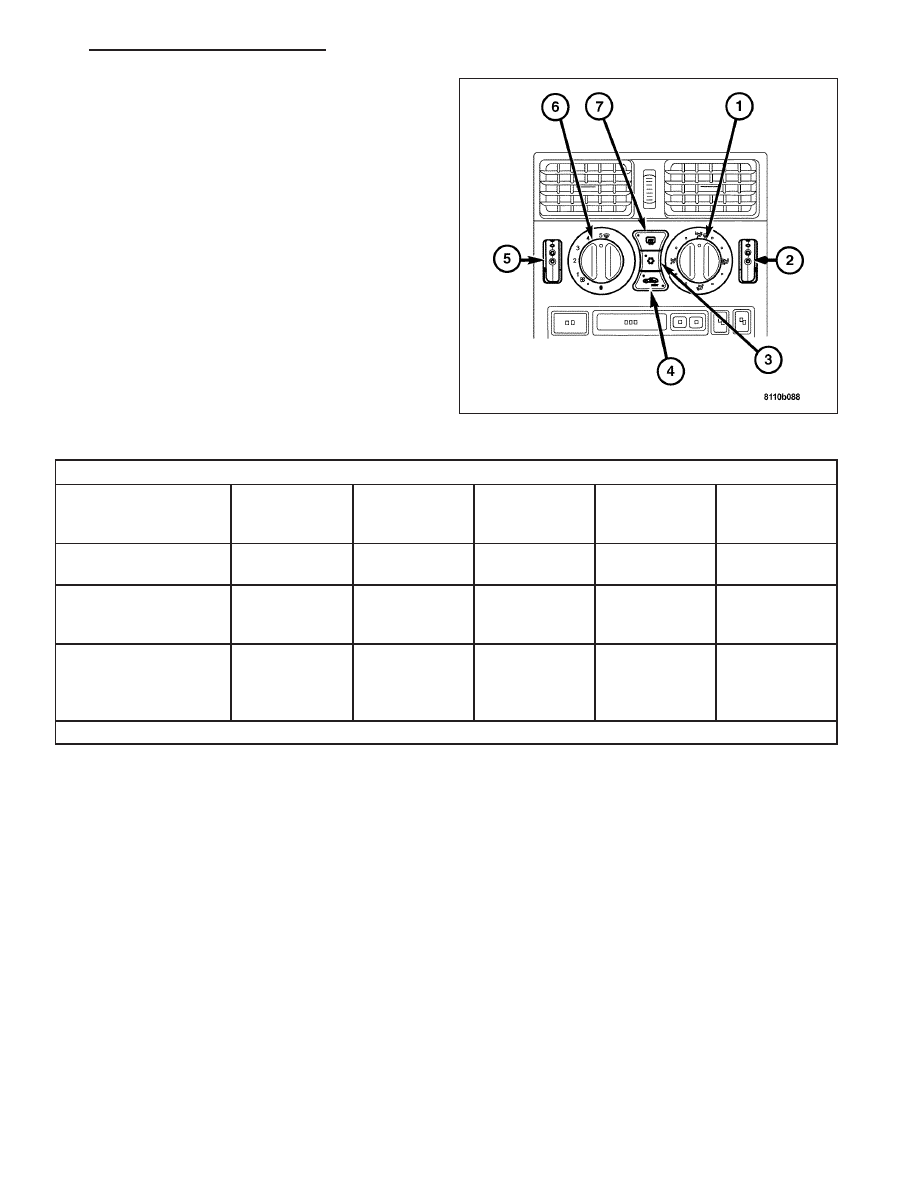Chrysler Crossfire. Manual - part 992

1. Connect a manifold gauge set.
2. Set the A/C Heater mode control switch knob (2) in
the Panel position, the temperature control knob (7)
in the full cool position, the A/C button in the On
position, and the blower motor switch knob (6) in
the highest speed position.
3. Start the engine and hold the idle at 1,300 rpm with
the compressor clutch engaged.
4. The engine should be at operating temperature.
The doors and windows must be open.
5. Insert a thermometer in the driver side center A/C
(panel) outlet. Operate the engine for five minutes.
6. The compressor clutch may cycle, depending upon
the ambient temperature and humidity.
7. With the compressor clutch engaged, record the
discharge air temperature and the compressor dis-
charge pressure.
8. Compare the discharge air temperature to the Performance Temperature and Pressure chart.
Performance Temperature and Pressure
Ambient Air
Temperature and
Humidity
21° C
(70° F @ 80%
humidity)
27° C
(80° F @ 80%
humidity)
32° C
(90° F @ 80%
humidity)
38° C
(100° F @
50% humidity)
43° C
(110° F @ 20%
humidity)
Air Temperature at
Center Panel Outlet
10 to 13° C
(50 to 55° F)
14 to 17° C
(58 to 63° F)
15 to 18° C
(60 to 65° F)
17 to 20° C
(63 to 68° F)
14 to 17° C
(58 to 63° F)
Evaporator Inlet
Pressure at Charge
Port
241 to 276 kPa
(35 to 40 psi)
262 to 290
kPa
(38 to 42 psi)
269 to 296
kPa
(39 to 43 psi)
275 to 303
kPa
(40 to 44 psi)
262 to 290 kPa
(38 to 42 psi)
Compressor Discharge
Pressure
1241 to 1792
kPa
(180 to 260
psi)
1380 to 1930
kPa
(200 to 280
psi)
1380 to 1930
kPa
(200 to 280
psi)
1655 to 2206
kPa
(240 to 320
psi)
1567 to 2068
kPa
(220 to 300 psi)
Note: The discharge air temperatures will be lower if the humidity is less than the percentages shown.
ZH
HEATING & AIR CONDITIONING - SERVICE INFORMATION
24 - 71